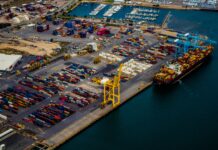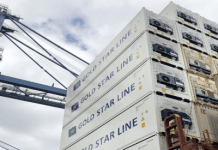
UK’s Port of Tyne has unveiled a next-generation Vessel Traffic Services (VTS) system with a modernised architecture and expanded features. The technology improves VTS operators’ situational awareness and decision-making.
This fully compliant system, deployed by Tidalis, adheres to the standards set by the International Association of Marine Aids to Navigation and Lighthouse Authorities (IALA) and covers the waters of the Port of Tyne, extending from 6 nautical miles out at sea to 3 nautical miles inland.
The system employs the Automatic Identification System (AIS) to provide coverage throughout a 7-nautical-mile section of the Tyne River up to Dunston.
The Port of Tyne has two Vessel Traffic Services (VTS) centres with the main one operating two locations around the clock. In case of an emergency, a backup position is available at a remote location.
According to a statement, two Hensholdt X-band radars and two Saab R60 AIS base stations monitor vessel activity at the Port of Tyne. The base stations are fully prepared to handle the VHF Data Exchange System (VDES), the next generation of AIS.
Two Bosch CCTV cameras automatically controlled by radar tracking give additional vessel details in the area. In addition, the VTS system provides a framework for optimising port calls.
“In addition to safety considerations, the predictability of port operations is becoming ever more important,” said Tidalis in a statement, pointing out that “Factors such as increasing population, the drive to reduce carbon emissions, and revised trade routes necessitate detailed planning that begins as soon as a vessel departs the port for its next destination.”
The architecture of the system is service-based, promotes interoperability and enables
ports to establish maritime ecosystems. The technical platform that provides these
services is called the Maritime Service Suite, designed to expand coverage beyond the
surface of the sea.
“As an innovation hub for the UK’s port modernisation plan Maritime 2050, Port of Tyne has strong digitalisation ambitions,” stated Ivo Tummers, CEO of Tidalis.
Tummers further added, “The new VTS and its web-oriented architecture fit seamlessly in a port where all staff have already been given tablets to streamline operations.”
The Port of Tyne obtains access to additional capabilities that are generally only available through professional AIS services, such as communication via AIS mail, by having control over their own AIS base stations.
Another key aspect is the availability of virtual Aids to Navigation (AtoN), which allows VTS operators to dynamically establish restricted zones and virtual warning buoys that show on ships’ electronic navigation charts.





